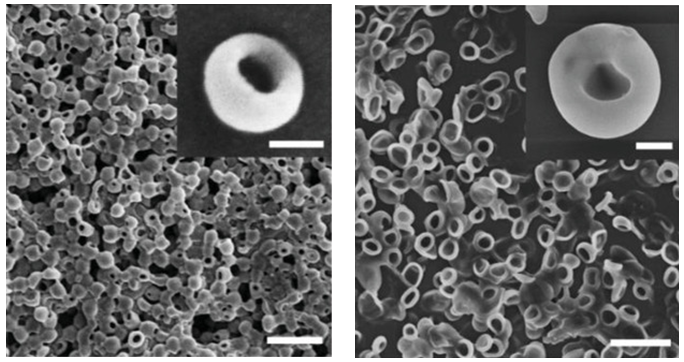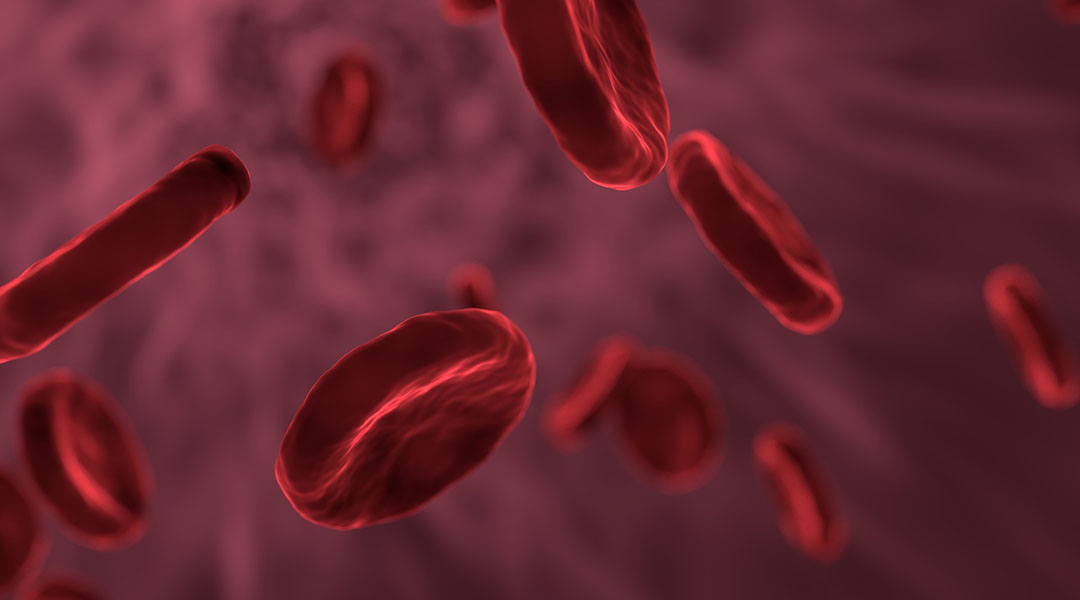Designing structures that operate in harmony with the natural environment is the goal of biomorphic engineering. By mimicking structural parameters such as size, shape, and surface chemistry, functional nanosystems can imitate biological entities, while at the same time enhancing their properties.
Red blood cells (RBCs) are essential to human life, carrying oxygen to tissues in the body. Developing a structural and functional mimic of RBCs could reveal multifunctional therapeutics that can operate in vivo for advanced healthcare applications.

Left: Scanning electron microscopy (SEM) image of stomatocytes (scale bar = 1 μm). Inset of a single stomatocyte (scale bar = 100 nm). Right: SEM image of RBCs of a mouse (scale bar = 10 μm). Inset of a single RBC (scale bar = 1 μm).
Imitating the topologically discrete oblate morphology and surface properties of RBCs, engineered polymeric stomatocytes could be a promising synthetic alternative (see image).
The dual-compartmentalized oblate structure of stomatocytes, characteristic of RBCs, enables them to encapsulate multifunctional cargo. Just as RBCs transport oxygen around the body, engineered stomatocytes can carry oxygen-binding hemoglobin and photosensitizers. This has promising potential for photodynamic therapy (PDT) applications. To aid seamless integration of the engineered stomatocytes into biological environments, a cell membrane coating can also be added to the structures.
As a proof of concept, biodegradable poly(ethylene glycol)-block-poly(D,L-lactide), PEG-PDLLA, stomatocytes were loaded with hemoglobin and a photosensitizer, chlorin e6, and coated in a RBC membrane for effective camouflaging. Systematic circulation tests showed a long retention time of these stomatocytes in vivo. In both a regular cell culture and a 3-dimensional tumor cell model, the synthetic RBCs showed improved PDT performance.
This demonstration of engineered stomatocytes in vivo shows their potential for clinical therapeutic applications.

















